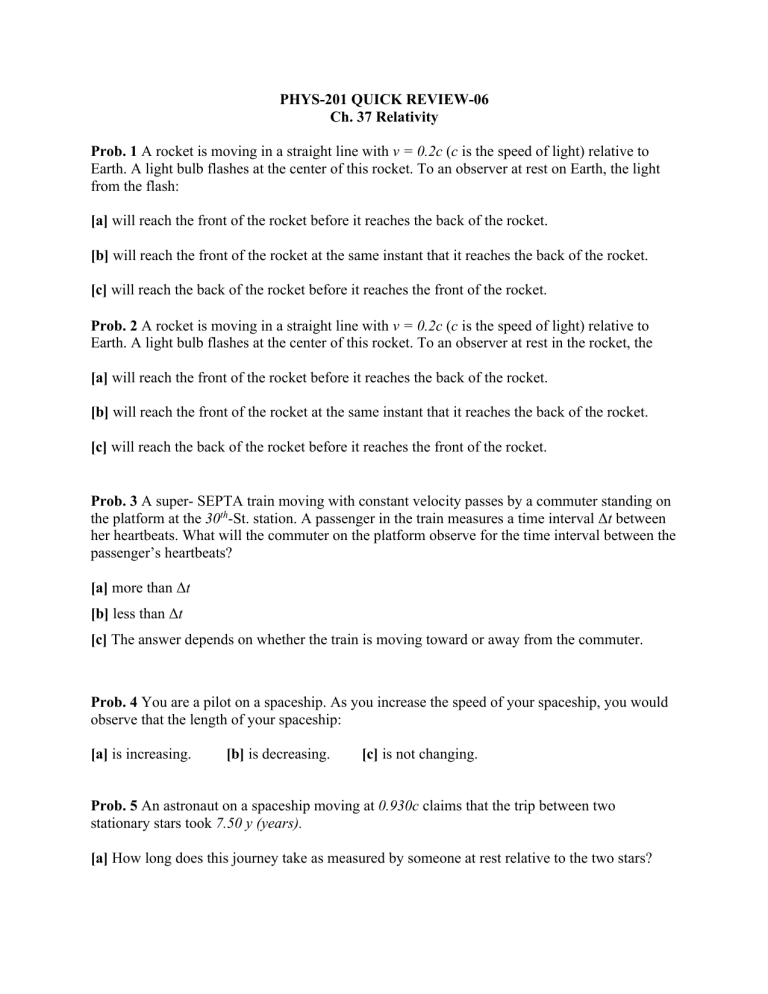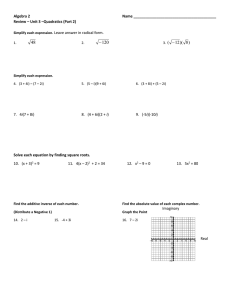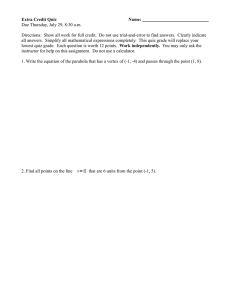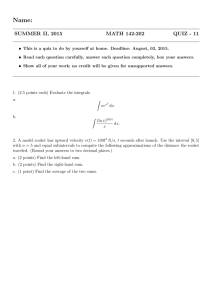
PHYS-201 QUICK REVIEW-06 Ch. 37 Relativity Prob. 1 A rocket is moving in a straight line with v = 0.2c (c is the speed of light) relative to Earth. A light bulb flashes at the center of this rocket. To an observer at rest on Earth, the light from the flash: [a] will reach the front of the rocket before it reaches the back of the rocket. [b] will reach the front of the rocket at the same instant that it reaches the back of the rocket. [c] will reach the back of the rocket before it reaches the front of the rocket. Prob. 2 A rocket is moving in a straight line with v = 0.2c (c is the speed of light) relative to Earth. A light bulb flashes at the center of this rocket. To an observer at rest in the rocket, the [a] will reach the front of the rocket before it reaches the back of the rocket. [b] will reach the front of the rocket at the same instant that it reaches the back of the rocket. [c] will reach the back of the rocket before it reaches the front of the rocket. Prob. 3 A super- SEPTA train moving with constant velocity passes by a commuter standing on the platform at the 30th-St. station. A passenger in the train measures a time interval Δt between her heartbeats. What will the commuter on the platform observe for the time interval between the passenger’s heartbeats? [a] more than Δt [b] less than Δt [c] The answer depends on whether the train is moving toward or away from the commuter. Prob. 4 You are a pilot on a spaceship. As you increase the speed of your spaceship, you would observe that the length of your spaceship: [a] is increasing. [b] is decreasing. [c] is not changing. Prob. 5 An astronaut on a spaceship moving at 0.930c claims that the trip between two stationary stars took 7.50 y (years). [a] How long does this journey take as measured by someone at rest relative to the two stars? [b] What is the distance (in units of ly, one ly is the distance traveled by light in one year) between the stars as measured by someone at rest relative to the two stars? Prob. 6 On planet X, a spaceship, S flying from city A to city B in a straight line with constant speed v = 0.866c measures its time of flight to be tS . The time measured for the same flight by a stationary observer on the ground is tG = 12.0ms. (You can assume the ground to be flat and neglect the physical dimensions of the spaceship.) [a] Who measures the proper time of flight from city A to city B? (circle your choice below) [i] the observer on the ground. [b] What is the value of tS? [ii] the spaceship’s pilot.




